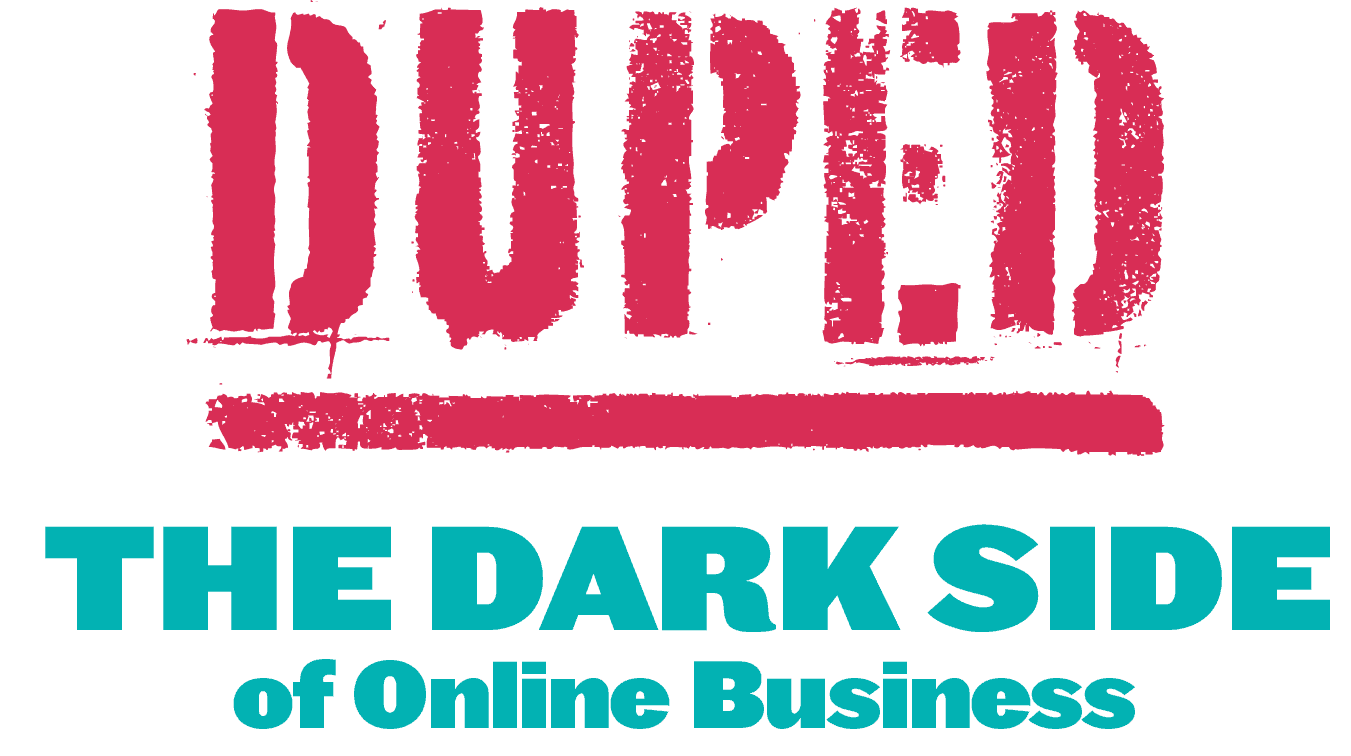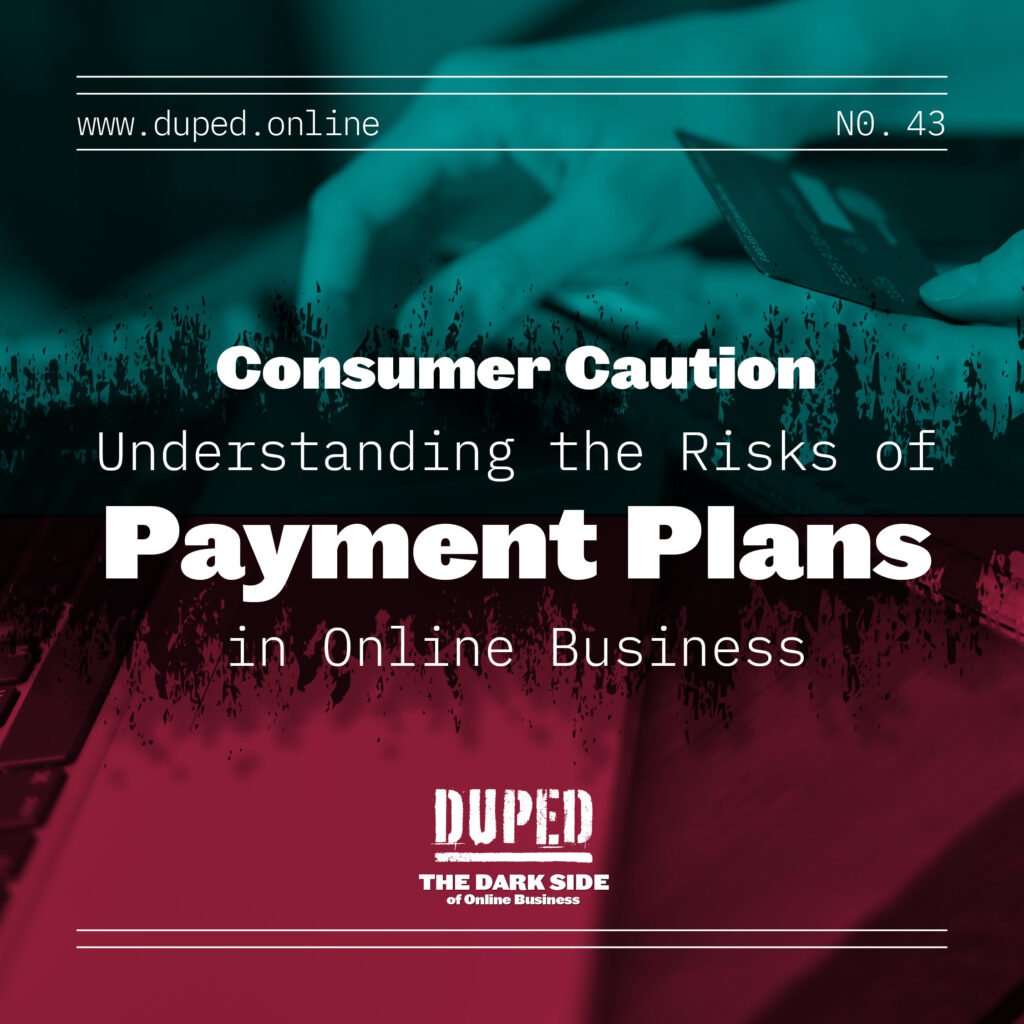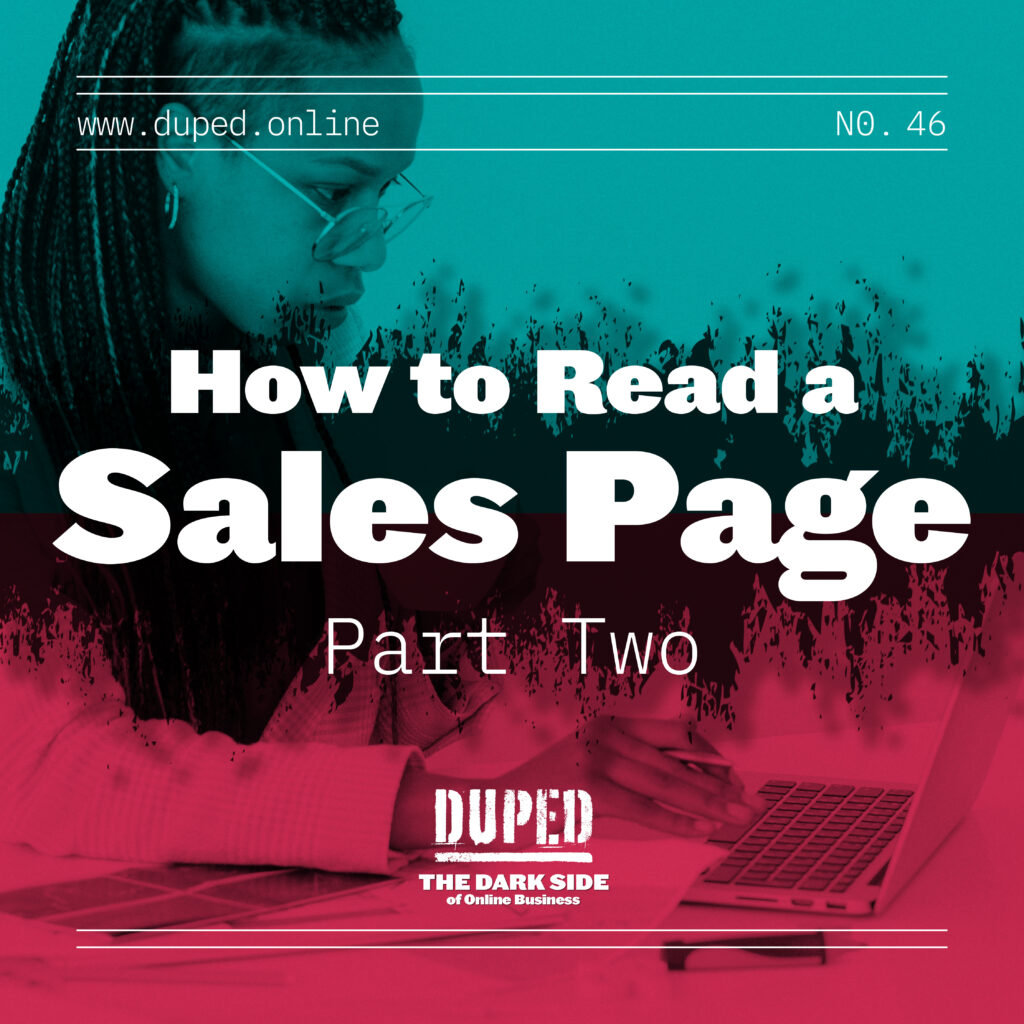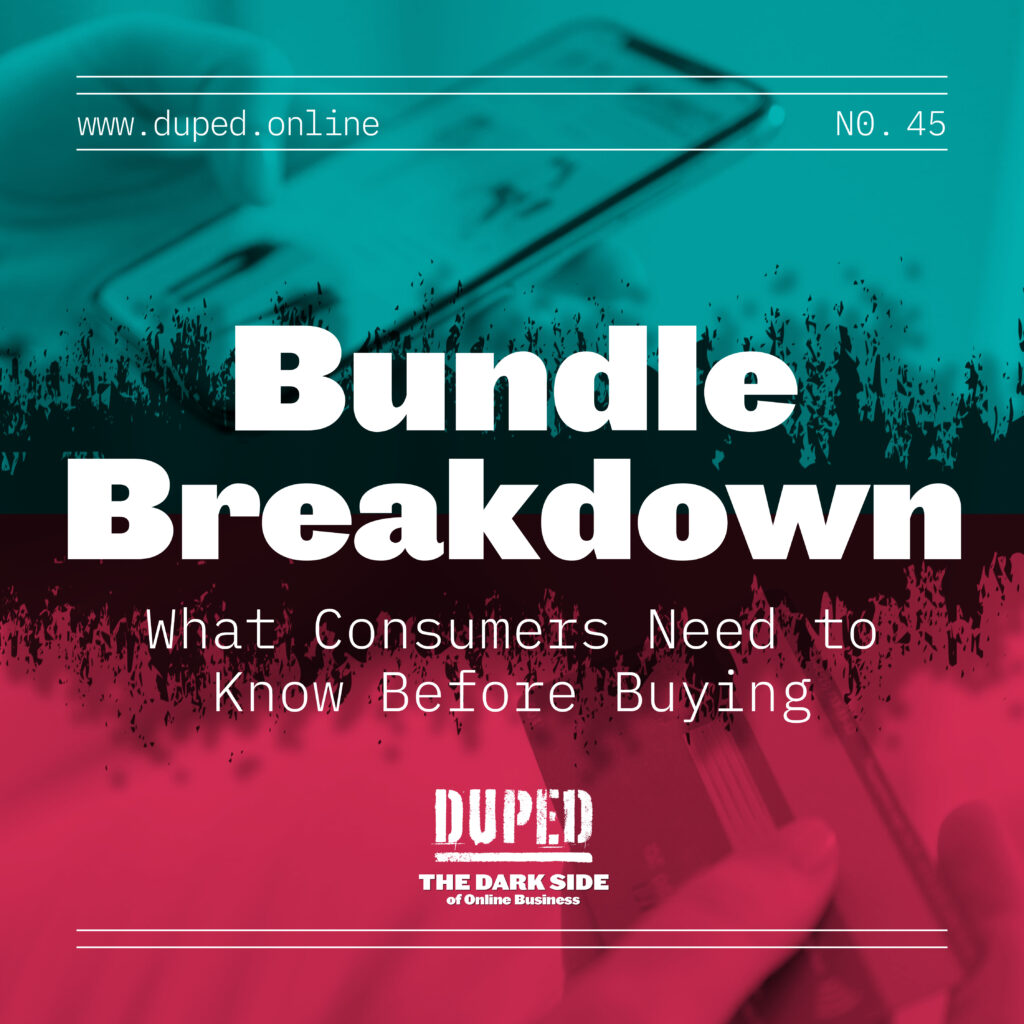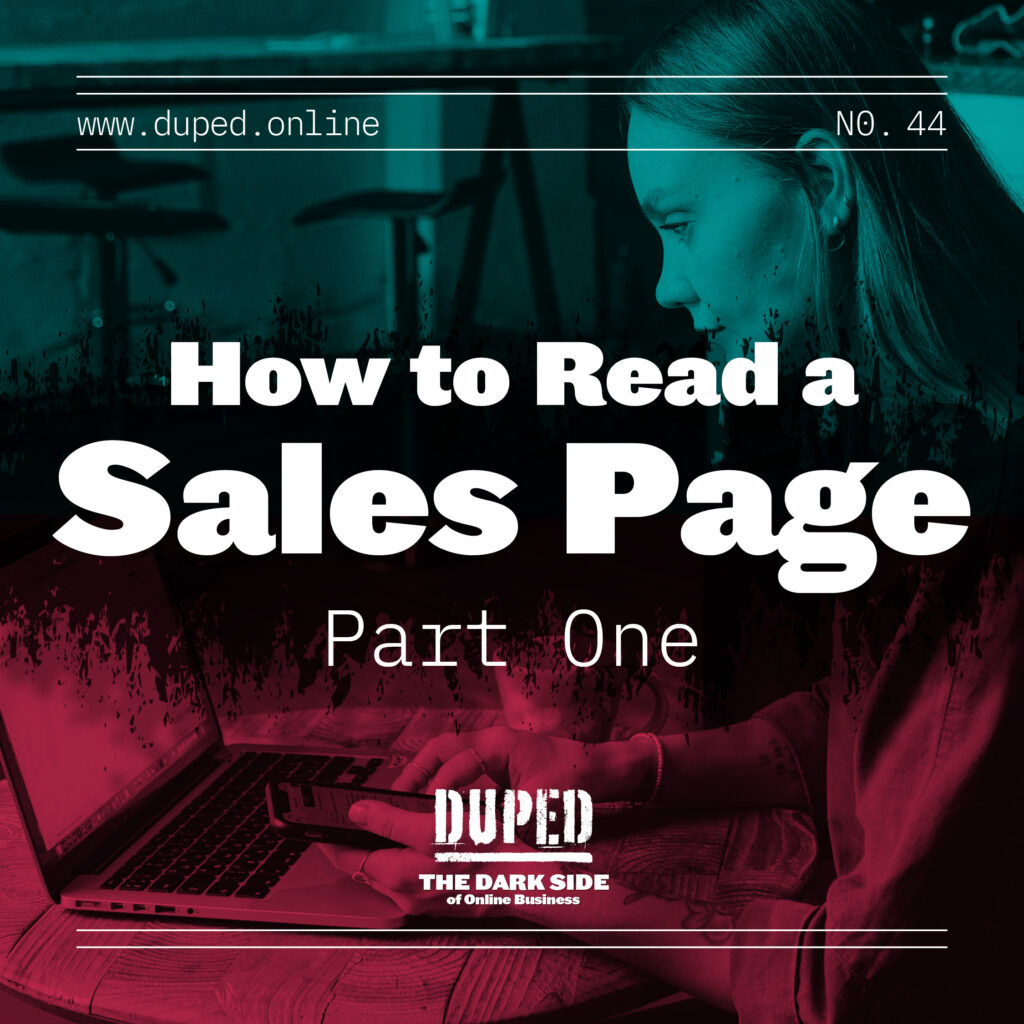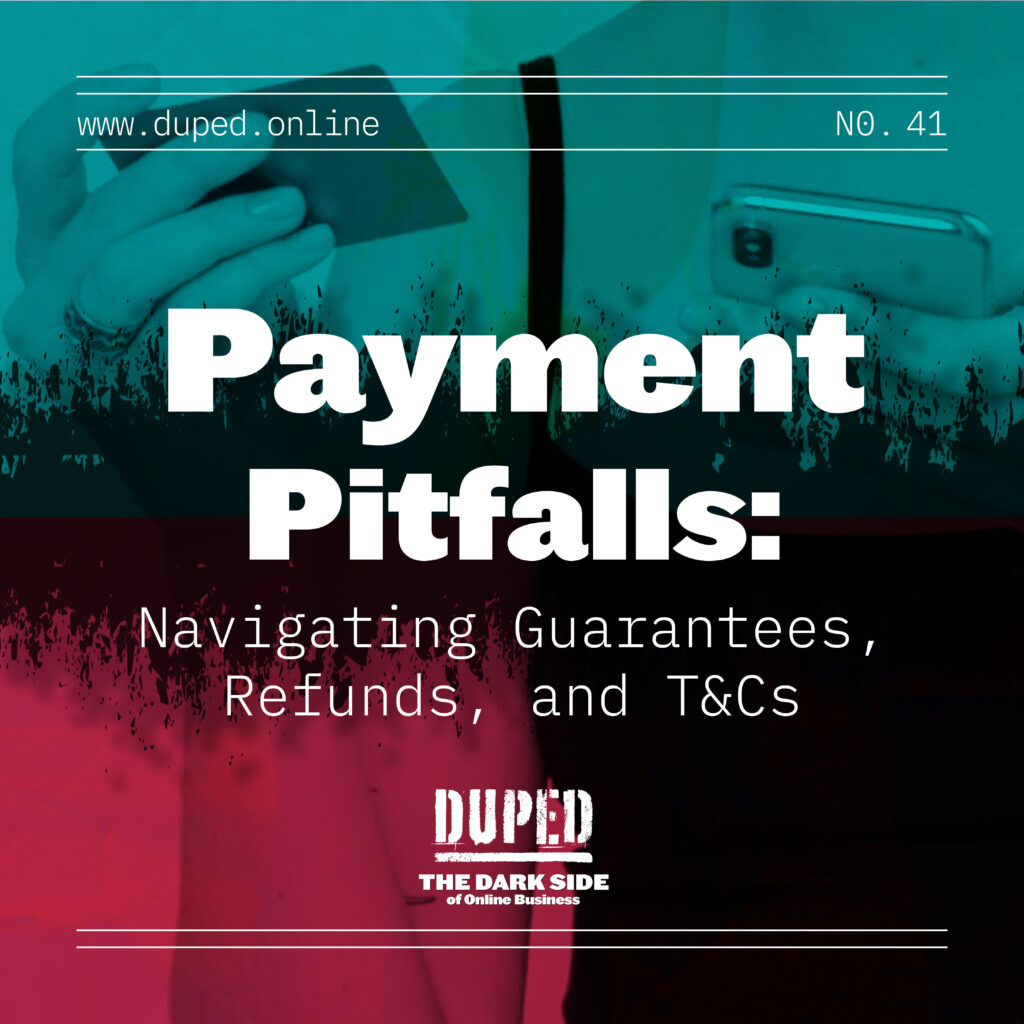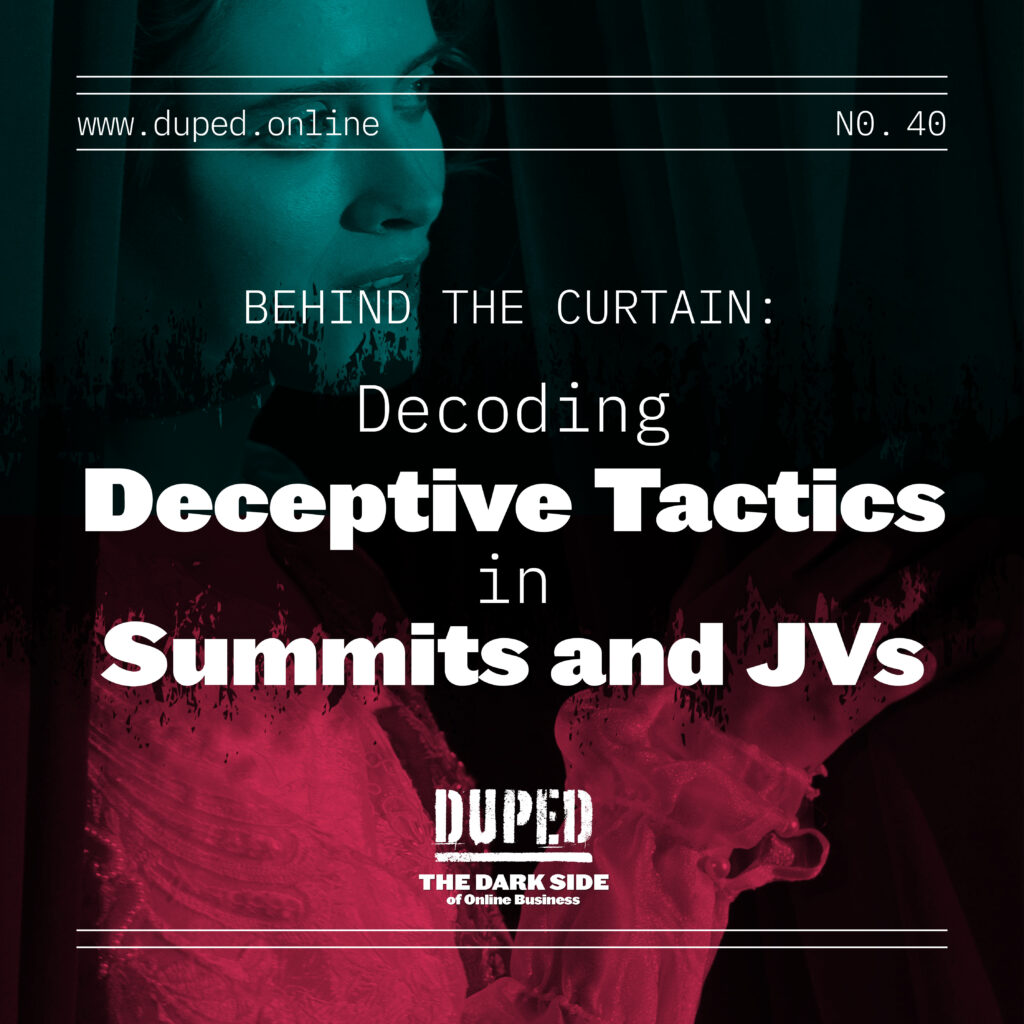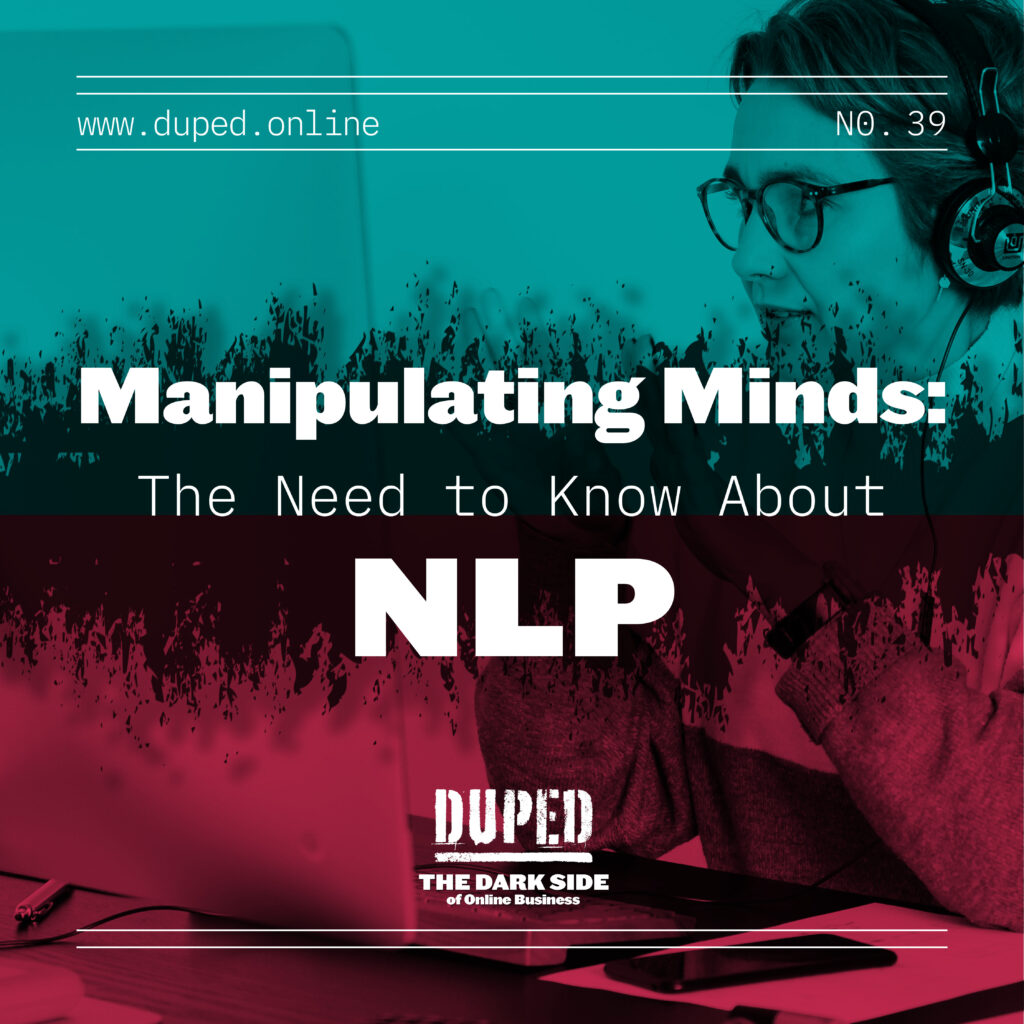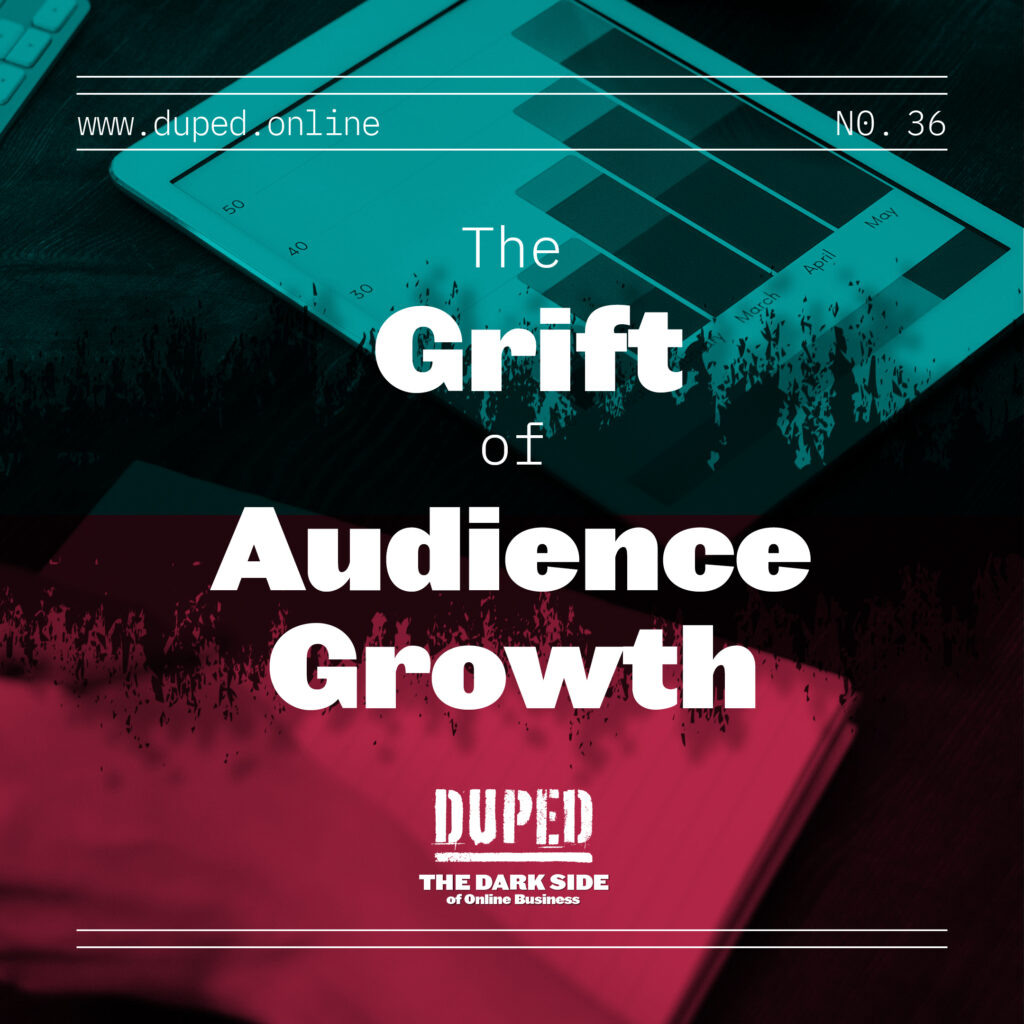
The Grift of Audience Growth
Truth time: Growing your audience in 2023 is hard. Yet, the web celebs who are selling you courses about how to create courses, memberships or programs want you to believe that it is easy. No audience, no problem.
This is why we wanted to dive into the grift of audience growth on this episode of Duped.

Once upon a time, in the early days of Online Business, it was really easy to grow your audience.
Facebook was new. There was no algorithm yet. Everyone could see your posts. It was really easy to build brand awareness back then.
Even when the algorithm came around, there was a time when you could run ads and get new people on your email list for a buck.
Back then, it created content + marketing on social and voila, instant audience.
That’s precisely why we wanted to talk about the Grift of Audience Growth because most of the business programs being sold—courses, memberships, group programs—require audiences—big audiences to make the business model work
But most of these programs say “no audience no problem.”
So, let’s start with math.
How Big Of An Audience Do You Need To Sell Courses, Memberships, and Group Programs
Here’s a post that Michelle found on Threads:

And then, Michelle’s response to this post because she was clearly choosing violence that day:

It doesn’t end there; there are a lot of case studies that tout things “How this Course Creator replaced her full-time income with 7K subscribers.”
Then you read the case study and find out she had a million followers on YouTube…so yeah, of course, she was able to do it.
Nowhere in the article does she discuss what she did to get 7K people on her email list?
Let’s talk about the math…
Courses, memberships, and group programs normally convert at around 1%. For every 100 people on your email list, plan to sell 1 course. (Yep, that’s it).
Take the amount of revenue you want to earn and divide it by the price of your course (or your group program or membership). That’s how many you need to sell.
Then add two zeros to the number you want to sell, giving you the needed list size!
Let’s say we want to make $100,000 a year. We sell a $1000 course.
We need to sell 100 courses to make that amount of money,
which means we need 10,000 people on my email list.
As our friend Nechelle Bartley says ‘the math doesn’t math.”
The web celebs tell you “no audience, no problem,” or even with a small audience, you can have a figure launch…are not telling you the truth.
No audience is a problem, a cash flow problem, and if they told you how hard it is to grow that audience – you’d never buy their course.
What You Need to Know About Having a Course, Membership, or Program Model vs. 1:1 Work
The way leveraged offers are often sold is by shitting on service-based businesses.
- Stop trading dollars for hours.
- Working 1:1 is so demanding than having a group program.
- You’ll impact more people with a leverage offer than with 1:1 work.
The reality is that when you run a service-based business, you need significantly fewer clients. This means you don’t need to grow an audience of 10,000 subscribers.
I have clients who work with two or three organizations a year. They’re focused on working with their clients and building relationships.
Before signing up for a course creation program, you have to ask yourself what job you want to have in your business.
If you’re a 1:1 service provider, coach, or consultant, your job is working with your clients with a dash of marketing.
If you’re a course creator, your job is MARKETING. Your focus is growing your audience all the dang time.
Michelle runs a community, The Expert Up Club and her focus for 2024 is audience growth.
When you buy any program, ensure it aligns with what you want to do in your business.
Before buying any type of program that teaches you to create a program, remember this.
- Do the math. Understand how big of an audience you need before buying a program. The math needs to math.
- Be wary of testimonials. People who make these leverage offer work usually come in with an audience.
- Realize audience growth is hard. If you want a leveraged offer, know that audience growth is hard; it’s a marathon, and you’ll have to work at it.
- What kind of job do you want? 1:1 work allows you to focus your time on clients, whereas a leveraged offer focuses your time on being a marketer. Ask yourself what kind of job you want to show up for.
Links for this episode:
Join the

Patreon

for only $7/month and get a
monthly bonus episode,
behind-the-scenes content
and more.
